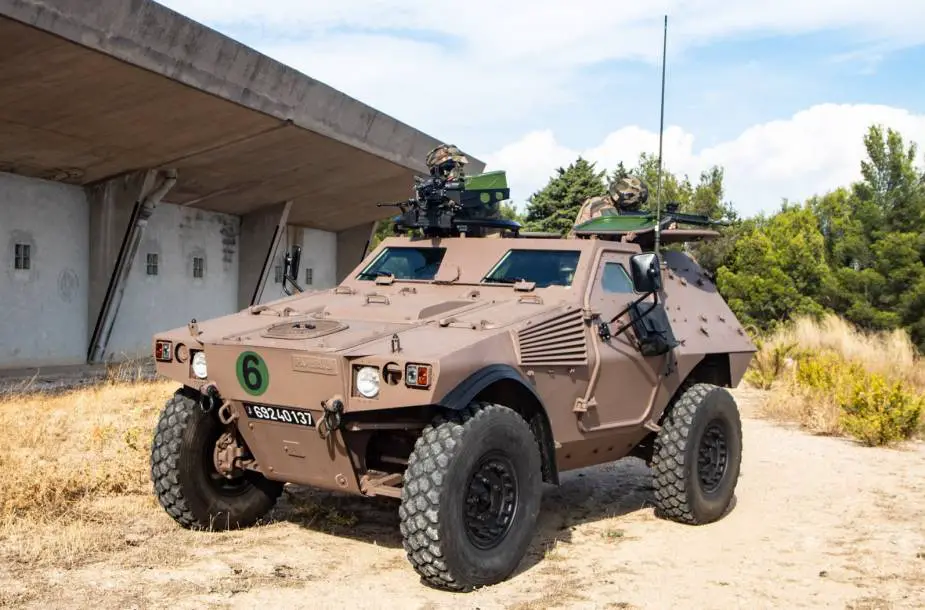Breaking news
French Foreign Legion 1 REC receives its first VBL Ultima armored vehicles.
According to a tweet posted on February 11 by the commanding officer of the 1st Foreign Cavalry Regiment (1er Régiment Étranger de Cavalerie, 1er REC), his unit has received its first VBL Ultima armored vehicles. The 1 REC is the only cavalry regiment of the Foreign Legion in the French Army. It is one of two armored cavalry regiments of the 6th Light Armored Brigade.
Follow Army Recognition on Google News at this link

The 1st Régiment Etranger de Cavalerie (1st Foreign Cavalry Regiment) of the French Foreign Legion has received its first VBL Ultima armored vehicles (Picture source: 1 REC C.O. Twitter account)
Entrusted in 2015 to Arquus (then Renault Trucks Defense), the VBL upgrading program began in December 2016, leading to the qualification of the Ultima standard in 2019. Of the 800 units planned for this upgraded version of the VBL, 730 will be assigned to the Ground Force by 2025 and 70 others by 2030. The VBL is expected to be replaced by the VBAE (Véhicule Blindé d’Aide à l’Engagement, litterally Armored Vehicle for Assistance to Engagement) program.
The VBL Ultima benefits from a new diesel engine – the PSA DW10F, providing 130 hp, an increase of over 35% compared to the original Peugeot XD 3T –, coupled to a new Mercedes automatic gearbox. This allows maintaining a good power-to-weight ratio, the Ultima having a GVW of 5.2 tonnes compared to the 4.4 tonnes of the VBL latest versions in service with the French land force. The rear axle receives new double-triangle suspensions, front suspensions being also upgraded as well as the braking system, which is fitted with an ABS system, all this allowing an increase in the payload as well as of the top speed, which until now was limited to 95 km/h, maximum authorized speed remaining classified. Another VBL Ultima feature is the removal of the floating kit, although at the rear the axle that used to be fitted with the propeller is still visible; this was probably a bargain between protection and floatability, the new GVW exceeding the vehicle floating capacity.
The production rate is now stabilized at two vehicles per week, the whole process lasting one and a half months, 15-16 vehicles being present along the line when this works at full steam. This is not always the case, Paolo Valpolini wrote in EDR, as the incoming vehicles are provided by the Army itself, and there may occasionally be some gaps, which doesn’t help the production process. It is also to note that the same assembly line also deals with the VBL Mk.1 production, an interim version adopted by the French Army with improved mine protection, to answer urgent operational needs. deeply improved rear axle and suspension, a new 130 hp PSA DW10F engine (compared to 95 hp previously) coupled to a Mercedes W5A580 automatic gearbox. The transmission and the cooling system have also been modified. The braking system is now fitted with an ABS. From 4.5 tons, the gross weight is now 5.2 tons for a load capacity of 1.3 tons. The vehicle is no longer amphibious.
The Reconnaissance version, armed with either a 7.62 or 12.7mm machine gun, is equipped with a TR-VP 213 or PR4G radio, OB 41 and OB 43 night vision goggles, and DUK-DUR 440 radiation meter and a dosimeter. In the MILAN anti-tank version, the TR-VP 213 is replaced by a TR-VP 13 radio and the OB 41 by OB 51 night goggles.




























